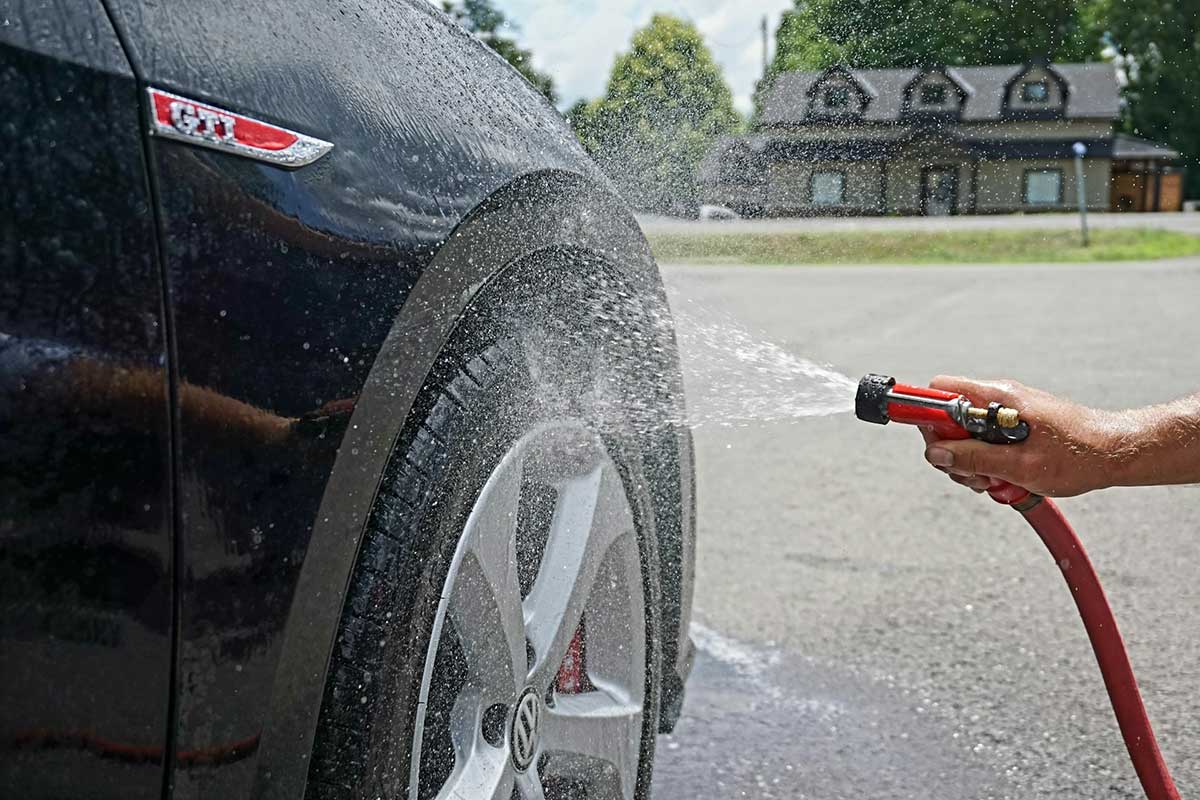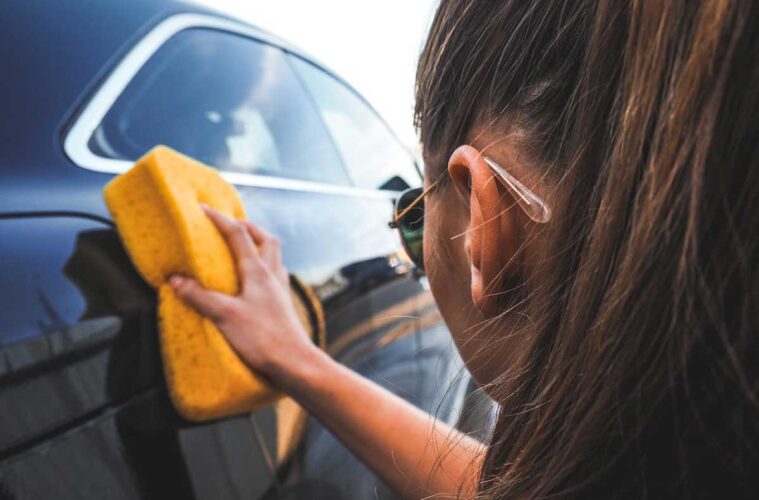Washing your car seems like a straightforward task—soap, water, and a bit of elbow grease, and your car should be gleaming like new, right? Not quite. Many people unknowingly make mistakes that can damage their car’s paint, leave unsightly streaks, or even reduce the vehicle’s lifespan. Whether you’re a weekend car-cleaning enthusiast or someone who washes their vehicle only when absolutely necessary, there are certain things you should never do when washing your car.
Here’s a detailed look at the most common car-washing mistakes and how to avoid them.
1. Using Dish Soap or Household Detergents
One of the biggest mistakes car owners make is using dish soap or household cleaning products to wash their vehicle. These detergents are formulated to break down grease and grime on dishes, but they’re far too harsh for your car’s paintwork.
Why It’s Bad:
- Strips off protective wax and sealants
- Causes paint to become dull over time
- Can leave streaks and residue that are hard to remove
What to Do Instead:
Use a pH-balanced car shampoo specifically designed for automotive paint. These shampoos clean effectively without damaging protective coatings.
2. Washing Your Car in Direct Sunlight
It might seem like a great idea to wash your car on a bright, sunny day, but this can do more harm than good.
Why It’s Bad:
- Water and soap dry too quickly, leaving streaks and water spots
- Heat can cause certain cleaning products to evaporate before they take effect
- Can lead to uneven drying, making it harder to get a spotless finish
What to Do Instead:
Wash your car in a shaded area or during cooler parts of the day, such as early morning or late afternoon.
3. Using a Sponge or Dirty Cloth
Many people grab an old sponge or cloth without realising that these can trap dirt and small particles, which act like sandpaper on your car’s surface.
Why It’s Bad:
- Sponges hold onto dirt, which can cause micro-scratches
- Dirty rags or cloths may contain debris that damages the paint
- Using a standard bath towel for drying can also leave swirl marks
What to Do Instead:
Use a microfiber wash mitt or a grit guard bucket to trap dirt and prevent scratches. When drying, use a high-quality microfiber drying towel.
4. Using a Single Bucket for Washing
Many people wash their entire car using just one bucket of soapy water, continuously dipping the sponge or mitt back in. This is a recipe for disaster.
Why It’s Bad:
- Dirty water reintroduces grime to the car’s surface
- Can cause fine scratches and swirl marks
- Inefficient at properly cleaning the vehicle
What to Do Instead:
Use the two-bucket method—one bucket with clean, soapy water and another with plain water for rinsing out your mitt after each pass.
5. Not Rinsing the Car First
Diving straight into scrubbing a dry, dirty car is a huge mistake. Dirt, dust, and road grime act like an abrasive layer, and scrubbing them directly can lead to damage.
Why It’s Bad:
- Increases the likelihood of scratching the paint
- Doesn’t allow soap to work effectively
- Can result in an uneven clean
What to Do Instead:
Always rinse your car thoroughly with a hose or pressure washer before applying soap. This removes loose dirt and reduces the risk of scratching.
6. Using the Wrong Kind of Towel to Dry
After washing, many people make the mistake of drying their car with an old bath towel, a t-shirt, or even letting it air dry.
Why It’s Bad:
- Old towels can cause swirl marks and scratches
- Air drying can leave hard water spots, making your car look dirty again
- Inconsistent drying can leave streaks
What to Do Instead:
Use a clean, soft microfiber drying towel or a dedicated car-drying chamois for the best results.
7. Neglecting the Wheels First
Your wheels and tyres are often the dirtiest parts of your car, covered in brake dust, mud, and road grime. If you leave them for last, you risk splattering dirt onto your freshly cleaned car.
Why It’s Bad:
- Spreads brake dust and grime onto already-cleaned surfaces
- Can cause streaks and require extra cleaning
- Dirt from wheels can get trapped in wash mitts, leading to scratches
What to Do Instead:
Always clean your wheels first using a separate wash mitt and bucket to prevent cross-contamination.
8. Using a High-Pressure Hose Too Close to the Paint
Pressure washers can be great for removing dirt, but if used incorrectly, they can cause damage.
Why It’s Bad:
- Can force water into seals, causing leaks
- Too much pressure can chip paint or remove wax
- Can push dirt further into the surface instead of removing it
What to Do Instead:
Use a pressure washer on a low-to-medium setting and maintain a safe distance from the car’s surface.

Things You Should NEVER Do When Washing Your Car
9. Ignoring Hidden Areas Like Door Jambs and Undercarriage
Many people focus only on the exterior and forget about areas like the door jambs, fuel cap area, and undercarriage.
Why It’s Bad:
- Dirt and moisture build-up can lead to rust
- Mud and grime can damage undercarriage components
- Can make the car look dirty even after washing
What to Do Instead:
Take a few extra minutes to clean these areas using a separate cloth or brush.
10. Overusing Wax or Polish
Waxing and polishing help protect your car’s paint, but using them too often or incorrectly can cause buildup and an unnatural finish.
Why It’s Bad:
- Over-waxing can make paint look cloudy instead of shiny
- Polishing too frequently can thin the clear coat
- Some waxes attract dust if not buffed properly
What to Do Instead:
Wax your car every 3–6 months and polish only when necessary to maintain a sleek and protected finish.
11. Using Glass Cleaner on Infotainment Screens
Many car owners spray glass cleaner on their infotainment screens or dashboards, assuming it will give them a streak-free finish.
Why It’s Bad:
- Many glass cleaners contain ammonia, which can damage screens
- Can leave streaks or clouding on digital displays
- May cause discoloration on dashboard materials
What to Do Instead:
Use a screen-safe microfiber cloth and a designated infotainment screen cleaner or just a damp microfiber towel.
Final Thoughts
Washing your car is an essential part of maintaining its appearance and longevity, but doing it the wrong way can cause more harm than good. Avoiding these common mistakes will help keep your car looking brand new while preventing unnecessary damage.
The Key Takeaways:
✔ Always use pH-balanced car shampoo
✔ Wash in the shade to prevent streaks
✔ Use the two-bucket method to avoid scratches
✔ Rinse before scrubbing
✔ Dry with a microfiber towel to prevent water spots
✔ Clean wheels first to prevent dirt from spreading
✔ Avoid household cleaners on infotainment screens
By following these tips, your car will stay in top condition for years to come. Happy washing!

